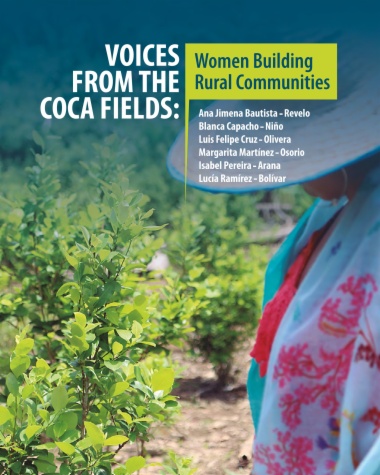Colombia’s response to the country’s drug problem has been based on the repression of the weakest links in the drug chain—namely consumers and small farmers—which has led to disproportionate rates of imprisonment and has involved a heavy focus on forced crop eradication. Not only has such an approach failed to effectively control the cocaine market, but it has also unleashed harmful side effects in terms of security, social development, and human rights as they concern communities in coca-growing areas. Moreover, although scholars and practitioners have analyzed Colombia’s drug problem from a variety of perspectives, these efforts have tended to overlook women’s experiences. This report explores the ways that rural norms, gender structures, the armed conflict, and illegal markets have played out in the lives of women coca growers in Colombia’s Andes-Amazon region, an area distinguished by the presence of illegal armed groups, violence, poverty, and weak state institutions. In this region of Colombia, coca cultivation has offered an important source of income for rural families, which in turn has affected women’s roles in society and has placed them in a vulnerable position vis- à-vis armed actors. The Andes-Amazon region is an area where the country’s war on drugs and its armed conflict converged and unmasked the gender structures dominating the countryside. These structures affected rural women in various ways: through everyday violence, the fumigation of illicit and licit crops alike, and women’s stigmatization due to their involvement in an illegal trade. But coca was also a source of livelihood that helped them attain economic independence and gave them the ability to improve their well-being and that of their families. The recent peace accord signed between the Colombian government and the country’s main guerrilla group represents a historic opportunity to learn from past mistakes in terms of the illicit crop problem and the social and political demands of coca-growing communities. Against this backdrop, it is time to recognize the contributions that women coca growers have made in both the public and the private spheres toward the construction of a peaceful countryside in the most remote and forgotten regions of the country.
- Cover
- Title page
- Copyright page
- Contents
- Acknowledgments
- Glossary
- Introduction
- Why analyze the war on drugs from a women’s perspective?
- Putumayo and the andes-amazon region
- Methodology
- An intersectional gender approach
- A subjective approach to the state
- Talking about life stories and stories of pain
- The structure of this book
- “Everything has been achieved using the community’s resources”: Women coca growers in putumayo and their relationship with the state
- Putumayo: Colonization, extractivism, and the state
- Enjoyment of economic, social, and cultural rights: Barriers faced by women coca growers in accessing housing, education, health, and land
- The war on drugs in the andes-amazon region: “They came to eradicate drugs but instead destroyed our land.”
- Reasons for cultivating coca: “We grew coca with the best of intentions—to be able to give our children an education.”
- Negative impacts of the war on drugs: “The fumigations were very cruel, very sad.”
- Alternative development programs: “My father believed in the idea of development in the countryside, and it turned out to be a total sham.”
- Armed actors and the household: Settings of violence, oppression, and resistance for women coca growers
- “While i cook and clean, my husband lays in the hammock ... and that hammock swings back and forth, back and forth”: The triple-shift workday of women coca growers in the andes-amazon region
- Gender norms and violence at the hands of armed actors
- Social mobilization by women coca growers in the andes-amazon region
- Rights and citizenship in the region: “Everyone agreed on the need to organize”
- The women’s movement in the andes-amazon region
- “That’s not good for a woman who has a husband”: Women’s participation in civil society organizations and the cocalero movement
- “The day will come when we are at the brink of equality”: Challenges for women’s leadership in mixed-sex organizations
- The final peace accord and drug policy reform: An opportunity for peace
- The peace accord as an expression of the evolving drug policy discourse
- “Hopefully we are now facing a time for change, for transformation, for renewal, especially for women”: Policy recommendations
- Conclusion
- General recommendations on a gender-based approach to peacebuilding and on bridging the gap between cocalero communities and the state
- Recommendations on a gender-based approach to the implementation of point one of the peace accord (comprehensive rural reform)
- Recommendations on a gender-based approach to the implementation of point four (solution to the illicit drug problem) of the accord, particularly the comprehensive program for illicit crop substitution
- Recommendations on security measures for women and the prevention of gender-based violence
- References
- About the authors

